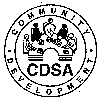
The Healthy Kids Program
Community Development Support Association
 |
The Healthy Kids Program |
|---|---|
| A service of the Community Development Support Association |
Why does it exist? A Community
Health Planning Committee was established by the Commission to address the
problem. A community
health worker, outposted at the local health department and county DHS office
for a one-year period,
identified five major causes: lack of awareness, administrative design, provider
dissatisfaction, data
management, and reimbursement. The Healthy Kids Program was established
to address the problem in
Garfield county and to replicate the approach in other counties in Oklahoma.
Collaboration and local
innovation have turned "Healthy Kids" into a pilot demonstration project for the
state. The project is
designed to make sure children are healthy and growing well - physically,
mentally and emotionally.
What is the program's goal?
What objectives does it have?
How many services have been provided through Healthy
Kids?
What are the major accomplishments of the program
thus far?
WHY DOES IT EXIST?
The 1989 Health Survey conducted by the Enid Metropolitan Area Human
Service
Commission found that the health status of low-income children and youth in
Garfield County was
seriously threatened by inadequate access to early and on-going screening and
treatment services. Only
17 percent of eligible children and youth were participating in the Early and
Periodic Screening,
Diagnosis and Treatment Program, known as EPSDT. Few physicians
were aware of or participating in the program. The survey also found that many
low-income children and
youth did not have access to continuing care arrangements with primary care
providers.GOAL:
The goal of the Healthy Kids Program is to protect and improve the health status
of low-income children
and youth in Oklahoma through a program of periodic health screening,
preventive health care, and
primary care services. The program is being tested in Garfield County.
OBJECTIVES:
NUMBER OF SERVICES PROVIDED:
(From the beginning of the program through June 30, 1997)
ACCOMPLISHMENTS: